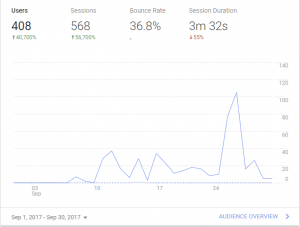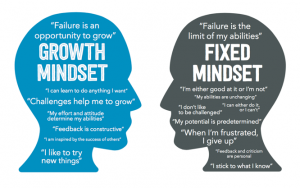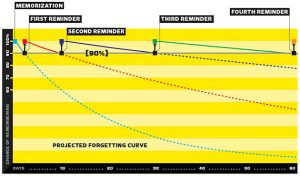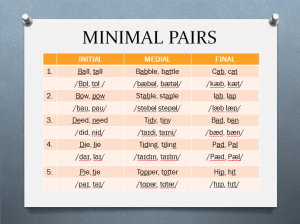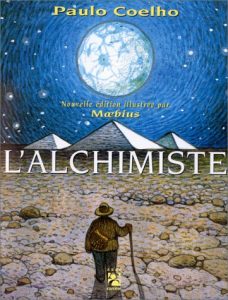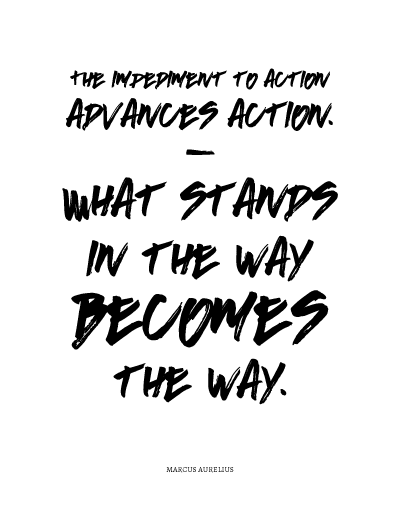Effective today, I am leaving my full-time job to pursue my own aims. I have also decided to leave Silicon Valley and currently have no plans to return, though I remain open-minded about coming back in the future. Before you jump to conclusions, I have not left to start a startup, nor have I been struck by lightning inspiration–at least not in the senses that many people who know me might otherwise assume.
At the risk of oversimplifying, the short version is that I am going to attempt to create automatable small businesses while leveraging the strength of US currency to live affordably abroad with two ultimate goals:
- Create a source of passive income that will afford me complete dominion over my own time and energy or, more simply, true freedom.
- Fail as many times as I can in a short span to internalize the lessons of failure, and never again fear being crippled by it.
Some reading this will undoubtedly think that I’ve gone crazy. Others will say that this is an incredibly risky move and will assume that I either have an extremely high risk tolerance or am just plain foolish. From a traditional frame of reference, these concerns are justified: who in their right mind leaves a comfortable Silicon Valley tech job for a life of relative uncertainty and no guaranteed financial prospects? Why not at least stay in Silicon Valley and pursue the stereotypical startup dream?
On the contrary, however, I’m not that risk tolerant, and I’m (usually) not that foolish. In fact, despite how crazy this move may sound, I believe that it’s one of the few sane and sure courses available to me right now.
While I am extremely fortunate to have reached the highest rungs of Maslow’s hierarchy of needs, I find myself overall dissatisfied with my life course to date and the future it promises. Ostensibly, I have won, through some combination of luck and sweat, the freedom to choose my destiny and to self-actualize my dreams. I’ve come to realize, however, that on many levels I’m failing to do so, and that I’m not as free as I thought I was. Worse, even as I fail to self-actualize, I often think that I am succeeding.
The Paradox of Traditional Success
The paradox here comes from a received definition of success that I have come to take for granted: that to be successful one must seek achievement, prestige, and social exaltation. Looking around at my peers, this seems to implicitly be the most common definition of success, and it makes sense: after all, striving for these things is what motivated many of us to work and study so that we could attend the most prestigious academic institutions, and striving for these things is what likely motivated many of our early career decisions. We sit where few others have had the opportunity to sit, and because of that much of society holds us in awe and reverence.
Unfortunately, there are two controlling and potentially harmful pressures inherent in this definition of success: a drive towards conformity, and a fear of failure.
Conformity
Pursuing prestige and achievement for their own sakes promotes conformity. We typically define prestige by what is desired but unattainable by the majority, so we as individuals don’t control what is considered prestigious. There is also usually a relatively established pecking order of prestige, with strong brands and selective opportunities typically dominating the field. Since the opportunities are few, and the majority agree on what is considered prestigious, when success drives us to seek prestige, we tend to conform to what society thinks is desirable and scarce. This outcome is unfortunate because it pushes many of what might be considered the best and brightest to trade their own desires, their own dreams, and their own originality for achievement and esteem in the eyes of the majority, sometimes even at the expense of their values.
Up until now, this has certainly been a theme in my life–I went to the most distinguished school I could, and took a job at the most prominent company that fit my skills and interests. Even in my most self-aware moments, I don’t know if I stopped to think whether I did these things because they were right for me, or if I did them because I knew society celebrates people who walk the prestigious path. Without thinking about it, my default mode became conformity motivated by a desire for prestige. Now that I’m capable of questioning it, I’m no longer willing to trade what makes me unique–or the chance to discover that–for prestige; I’m no longer willing to compromise on my values for an empty sense of accomplishment.
Fear of Failure
While conformity controls what we strive for, fear of failure influences how we get there. When approached correctly, failure can be life’s greatest teacher and an individual’s greatest ally. On the other hand, when handled inappropriately or outright avoided, failure can tear us apart from within, and it can drive a cycle of insecurity that encourages us to feed our egos instead of our souls. I’ve personally experienced failure both ways.
Most of us are conditioned to fear failure from a young age, and many of us will spend our entire lives doing everything in our power to avoid it. This reflex is a byproduct of the score-, test-, and grade-driven society that raises us. We’re subconsciously taught that the better we do on tests and the more pristine our resumes, the more we will be valued by colleges and, therefore, by society. At its extreme, we begin to confuse our perceived value to society with our sense of intrinsic self-worth. We come to believe the prime fallacy that failure is the antithesis of success, and that the less we fail, the better the life we will lead. Failure becomes our nemesis and our most potent fear. We allow this fear to define our sense of risk, often unquestioningly favoring well-paved roads to “success” over self-discovery, self-growth, and self-expression through finding our own unique ways through the world and living with integrity.
Try as we might, we cannot evade failure forever. Failure is a fact of life–in our careers, in our relationships, in our goals. The question, then, is not if we will fail, but when we will fail. Success should be defined not by the absence of failure, but rather by what we learn, who we choose to be, and the strength of character we display when we fail.
I cannot honestly say that I no longer fear failure–decades of accepting fear as truth cannot be reversed in the blink of an eye through a trick of the mind. Rather than succumb to that fear, however, I choose to face it, to embrace it, and even to seek it out. When I am done, I hope to have truly made failure my ally.
Redefining Success
I have chosen to reject any definition of success that finds its basis in conformity, fear, and ego. I refuse to measure my success in terms of material possessions, social esteem, and external validation. Instead, I have adopted a new definition based on my principles, values, and convictions: success means reaching my highest potential through application and embodiment of my principles, through cultivation of a character that is maximally aligned with my values, and through integrity to my convictions. I choose to measure my success in terms of growth, self-esteem, and internal validation. I hope that by doing so I will reach my highest potential, and that I will use that power to help others reach theirs.
A Good Life
This new definition of success comes from intense reflection on the perennial philosophical question, “What makes for a good life?” To find my answer, I imagined myself on my deathbed and tried to determine what I would need to do in order to feel satisfied with the life I lived.
External Validation
The first set of ideas that came to mind were stereotypical metrics for success: fame and fortune–things like wealth, material possessions, and the adulation of society and my peers. These metrics likely come from popular culture; the celebrities we adore have all of these things, and because they’re so high-profile we often assume that they’re among the happiest, most fulfilled, and most successful among us.
Thinking on it further, we often desire these things when we’re seeking external validation. We want others to respect us, to love and adore us, even to be jealous of us because when they do it props up our fragile egos. When we depend so heavily on the admiration of others, we don’t have to face the gargantuan task of learning to love ourselves. We seek status symbols in the form of material possessions because we think we can buy happiness or that net worth correlates with self-worth.
Worse, though, external validation is elusive and unreliable: we cannot control how others regard us just as we cannot control the many unpredictable factors that may or may not lead us to wealth. I’m not willing to take that chance with my sense of ultimate fulfillment.
Internal Validation
They say true happiness comes from within, and I agree: we become sustainably and self-reliantly content with ourselves when we cultivate sources of internal validation rather than external validation. I’ll even take it a step further and posit that the more internally validated we become, the closer we get to reaching our highest potentials–when we follow our internal compasses, we tend to grow most quickly and most authentically.
So what does it mean to be internally validated? In stark contrast with external validation, internal validation means loving ourselves, not in an egotistical or narcissistic way, but in an accepting and self-compassionate way. It means being able to derive a sense of self-satisfaction and self-motivation entirely from within rather than from without. In truth, I believe that what I call internal validation, when fully achieved, is what other philosophies refer to as “nirvana” or “enlightenment”: a complete sense of happiness, contentment, and fulfillment through mastery of the inner world.
How, then, do we become internally validated? We are most self-satisfied when we do, for lack of a less cliche phrasing, what feels right. Most of us, myself included, have certain principles, values, and convictions which help to define our sense of “rightness,” but which we don’t always follow. It’s easy to lose sight of these things because there are so many competing pressures in our lives: the pressure to conform; the aversion to natural human fears like failure, rejection, and regret; the default drive to seek comfort, certainty, and familiarity at all costs. It’s also surprisingly difficult to remember to regularly check-in with ourselves and be honest about our true motives.
By living a life that exemplifies and cultivates my principles, values, and convictions, I become more internally validated. When I do something because I hold conviction that it is the right thing to do, the outcome, which I often can’t control, ceases to matter. Instead, I’m happy because, given a choice, I acted with integrity to my values. I may not be able to control the fickle opinions of others or the whims of fate, but I can always control my character, my actions, and my reactions. I am much happier tying my ultimate fulfillment to these things than tying it to things outside my influence.
Of course, I’m not perfect, and I never will be. I also fully expect my values to change as I grow and experience more of life. I believe the pursuit is nevertheless worth it, and the wisdom I’ve accrued by living with authenticity and integrity is far more valuable to me than affluence or social acclaim. The pursuit of happiness seems to be an internal journey, not an external one, and that journey itself holds at least as much meaning as the destination.
Social Good
Those who know me well know that a sense of purpose for social good is an important part of my identity. For that part of myself, the idea of living my life solely to become internally validated–in a sense, a proxy for my own long-term happiness–feels selfish. Reconciling this took some thought, and I eventually amended my definition of a good life to include helping others become internally validated as well. This makes sense to me because it “feels right”–helping others is implicit in the principles of kindness, fairness, and compassion which I value highly–but it also stands to reason: if becoming more internally validated is how I maximize personal utility, then helping others reach that same state is how I maximize global utility.
There’s a bit of a paradox in the idea of helping someone else become internally validated, however. Is it even possible to help others become internally validated via external means? Though we can never directly create internal validation in others–that’s a task always left to the individual–there are two ways we can promote it:
- Free people from having to fight for basic needs, empowering them to have more choice and ability to meet their potential.
- Help people around us to feel, believe, and internalize a sense of personal worth and to feel, believe, and actualize their potential.
The first category is where the traditional “save the world” missions sit: existential threats like climate change or terminal disease may prevent a large number of people from reaching their potential by ending their lives prematurely. This category is also where social justice missions sit: a society that doesn’t provide equal opportunity or fair and equitable treatment to all regardless of their race, gender, or beliefs similarly prevents a large number of people from self-actualizing. Lastly, this category is where donation and direct acts of service fit: by donating our time, energy, resources, knowledge, or skills we can sometimes help fulfill the basic needs of others, giving them a better chance to meet their potential.
The second category is where we can make an impact in our everyday interactions with others. We’ve all met people who believed in us in ways that helped us affirm our belief in ourselves. These are the people who encourage us to grow, and who see our potential even when we struggle to. We all have the capacity to be those people in the form of, for example, a caring friend, a servant leader, a source of inspiration, a loving significant other, or an encouraging parent.
All that said, however, it’s important to remember that we can’t expect to be able to help others if we can’t help ourselves. This concept is similar to what we hear in every pre-flight briefing: that we should put on our own oxygen masks before assisting others with theirs. In order to help others reach their full potential and to maximize our impact, we must prioritize actualizing our own potential. If we’re not the best we can be, how helpful will we be in saving the world or leading a crusade for social justice? If we don’t believe in and pursue our own potential, what hope do we have of helping others believe in and pursue theirs? Of course, when possible, I believe in working on ourselves and contributing at the same time, but I don’t believe it’s healthy to deny our own growth needs when that’s not possible.
It’s also important to remember that contribution is contribution. There’s no value in comparing our contribution to others’; in reality, doing so turns social contribution into yet another status symbol arms race driven by our egos rather than our values. The only place where there is value in comparison is to ourselves: are we living with integrity and maximizing our ability to contribute in the ways available to us?
Walking My Path
Everything I believe and everything I’ve learned have led me to the crossroads I stand at now. Two years ago, as a computer science major at Stanford looking to go into industry, there were three obvious, socially-accepted paths after graduation: join a large, established, prestigious company like Google, Facebook, Dropbox, or Palantir; join a VC-backed startup; or start a VC-backed startup. These are the paths worse for wear, and though joining or starting a startup is certainly more financially risky, at this point it isn’t socially risky–doing these things still affords one “street cred,” and relative esteem in the eyes of one’s peers.
As a prestige-oriented individual, I never stopped to consider other options and, indeed, the doors laid open to me coming out of school reflected this. Now that I’m aware of my previous strong bias toward prestige, I can consciously counteract it, and in doing so I’ve had my eyes opened to a multitude of less conventional paths, some of which align more closely with my values and how I want to grow than the conventional ones. This doesn’t mean that I won’t ever return to a more well-trodden path, but it does mean that I don’t intend to do so unless I’m convinced there’s no better way to live my values and no quicker way to grow.
The path I have chosen this time signals a strong departure from what motivated me before, and a yearning to explore the road less traveled by. In the next chapter of my life, I hope to find financial independence while living and working with integrity. I plan to leverage my current skills, knowledge, and interests to create value for others, ideally in ways that help them self-actualize. Concretely, this means that I’ll be creating small products–most likely software-based–that can sustainably cover the cost of my lifestyle with minimal long-term time input. At the same time, I’ll be living abroad both to bring the cost of my lifestyle down and to satisfy my wanderlust.
I won’t lie and say that this doesn’t scare the crap out of me. By going it alone and changing my social setting I expect to experience extreme discomfort. I expect to fail, I expect to feel lonely, and I expect to feel afraid. I’m not arrogant enough to presume that the financial side of this is going to work–in the worst case I may blow my entire savings and fail to make a single cent. If it does work, however, I will win the ability to spend the vast majority of my time and energy in pursuit of my values without compromise. I will also have demonstrated to myself that I can create value on my own, and that if I ever need money to pursue my aims I’m capable of making it myself.
Regardless of the outcome, though, I expect to grow immensely–both in predictable ways and, if I’m lucky, in ways that will completely surprise me. Because my definition of success doesn’t correlate with financial gain, traditional definitions of risk don’t apply well here. Because I value maximizing growth more than I value maximizing comfort, this is the surest path I could choose. Because facing my fears requires cultivating a courage that upholds my highest values, I know that I’m living with integrity. I can only hope that that makes all the difference.
Walk Your Path
I’m not here to say that everyone who has ever taken a path that’s considered conformist or prestigious should immediately reverse course. I’m also not here to judge people for the paths that they have chosen–only they can really know why they made the choices they did. There are plenty of good reasons why people choose a more traditional path: sometimes that path truly does align with their strengths, interests, and values; sometimes that path offers growth and learning that can’t easily be found elsewhere; sometimes people are insecure and they just need something external to validate them so that they don’t give up; sometimes other responsibilities–to family, for example–require people to compromise and seek stability.
Whatever the reasons, the reasons themselves don’t matter to me; honest awareness of those reasons does. I ask that we have the courage to question our own motives. I ask that we compare our motives to our values, principles, and convictions. I ask that we be truthful and forgiving with ourselves when we find that we are not living with integrity. It’s never too late to start.
Your values and mine will likely not be the same–yours make you unique as mine make me unique. If we dare to follow our hearts where they lead us, we will walk unprecedented paths; paths full of adventure and challenge, growth and wisdom, success and failure that we will earn the right to call completely our own. It is my sincere parting hope that you find that path whatever and wherever it may be and that you walk it without regret, without shame, and without fear.
Thank You
Thank you for taking the time to read this. Much of this is very personal and, while I primarily write to inspire myself, I love hearing about how my ideas and my writing make other people think. If this resonated with you or, even better, if it didn’t at all, I would welcome a message, a phone call, or even just an anonymous comment below.
Further Reading
The thoughts, values, perspectives, and philosophies communicated here have been profoundly influenced by the following works, all of which have challenged my assumptions:
I believe the synthesis of these ideas is completely my own. No plagiarism or appropriation of ideas was intended.


